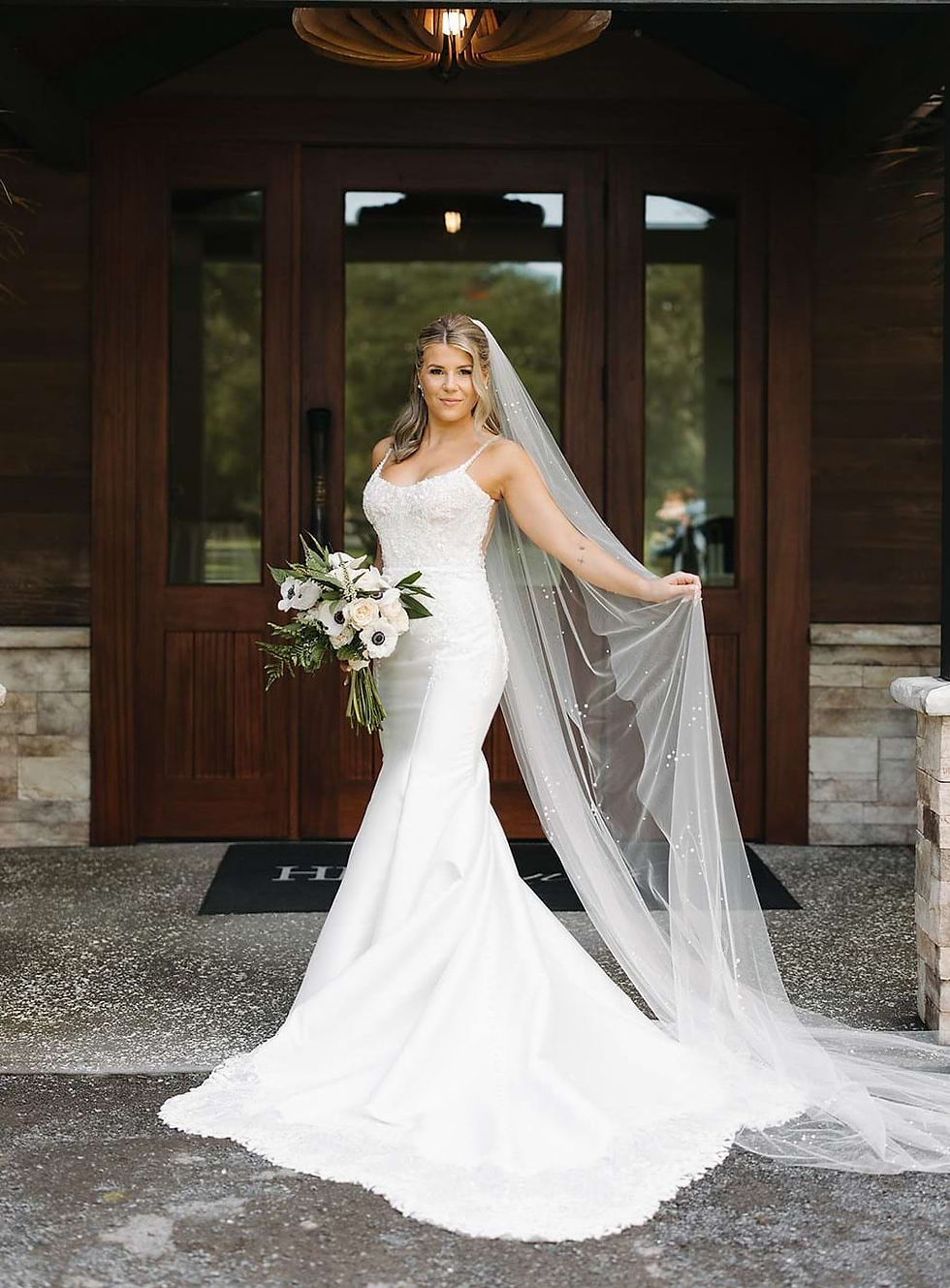Understanding the Anatomy of a Wedding Dress: FAQs for Brides
- jmajors
- May 31
- 4 min read
Embarking on the journey to find your perfect wedding dress can be both exciting and overwhelming. Familiarizing yourself with the key components of a wedding gown can empower you to communicate effectively with bridal consultants and make choices that align with your vision. Below, we've compiled a list of frequently asked questions to guide you through the anatomy of a wedding dress.

1. What is a wedding dress silhouette, and why is it important?
The silhouette refers to the overall shape and structure of the gown. It's one of the first elements to consider, as it sets the tone for your bridal look and influences how the dress complements your body type. Common silhouettes include:
A Line: Fitted at the bodice and gradually flares out from the waist, resembling the shape of an uppercase "A". This versatile silhouette suits most body types.
Ball Gown: Features a fitted bodice with a full, voluminous skirt. Ideal for brides seeking a fairytale or traditional look.
Mermaid: Hugs the body from the chest to the knees, then flares out dramatically. Accentuates curves and offers a glamorous appeal.
Trumpet: Similar to the mermaid but flares out mid-thigh, offering a balance between fitted and flared styles.
Sheath: Falls straight from the neckline to the hem, creating a sleek and modern silhouette.
Empire: Features a raised waistline just below the bust, flowing into a loose skirt. Great for a romantic, bohemian look.
2. How does the bodice influence the overall look of the dress?
The bodice is the upper part of the dress, covering the torso and often providing structure and support. It plays a crucial role in shaping the dress and highlighting the bride's figure. Bodices can vary in design, including strapless, sweetheart, V-neck, and off-the-shoulder styles. They may also feature elements like boning, corsetry, or embellishments to enhance the aesthetic and fit.
3. What are the different types of waistlines, and how do they affect the dress's appearance?
The waistline is where the bodice meets the skirt, and its placement can dramatically alter the dress's silhouette:
Natural Waist: Sits at the body's natural waistline, offering a classic and balanced look.
Dropped Waist: Extends below the natural waist, elongating the torso and adding a vintage flair.
Empire Waist: Sits just below the bust, creating a high-waisted appearance that elongates the legs.
Basque Waist: Features a V-shaped waistline that dips below the natural waist, accentuating the hips and adding a touch of drama.
4. How do different fabrics influence the dress's style and comfort?
The choice of fabric affects the dress's texture, weight, and overall feel:
Satin: Smooth and glossy, offering a formal and elegant appearance.
Tulle: Lightweight and airy, commonly used for skirts and veils to add volume.
Lace: Delicate and intricate, perfect for adding a romantic or vintage touch.
Chiffon: Soft and flowy, ideal for beach or destination weddings.
Organza: Crisp and sheer, providing structure without heaviness.
Consider the season and venue when selecting fabric to ensure comfort throughout your special day.
5. What is a bustle, and why might I need one?
A bustle is a system of hooks, buttons, or ribbons added to the back of a wedding dress to lift and secure the train, allowing for easier movement during the reception. There are various types of bustles, including:
American Bustle: The train is lifted and secured over the outside of the dress.
French Bustle: The train is tucked underneath the dress, creating a seamless look.
Ballroom Bustle: The train is gathered and secured to create the illusion of a floor-length gown without a train.
Consult with your seamstress to determine the best bustle style for your dress.
6. How do I choose the right neckline for my body type and personal style?
The neckline frames your face and upper body, influencing the dress's overall aesthetic.
Sweetheart: Resembles the top of a heart, flattering for most bust sizes.
V Neck: Elongates the neck and torso, suitable for brides seeking a slimming effect.
Off the Shoulder: Highlights the collarbone and shoulders, adding a romantic touch.
High Neck: Offers a modest and elegant appearance, often adorned with lace or embellishments.
Choose a neckline that complements your body shape and aligns with your wedding theme.
7. What are some tips for selecting the perfect wedding dress?
Start Early: Begin shopping at least 9-12 months before your wedding to allow time for fittings and alterations.
Set a Budget: Determine your price range beforehand to streamline the selection process.
Consider the Venue and Season: Choose a dress that suits the setting and weather conditions of your wedding.
Be Open-Minded: Try on various styles to discover what flatters your figure and matches your vision.
Trust Your Instincts: Select a dress that makes you feel confident and beautiful.
Understanding the anatomy of a wedding dress empowers you to make informed decisions and enhances your shopping experience. Remember, the perfect dress is one that reflects your personality, complements your body, and makes you feel radiant on your special day.
For personalized assistance and a curated selection of designer gowns, book an appointment with J. Major’s Bridal Boutique today.




Comments